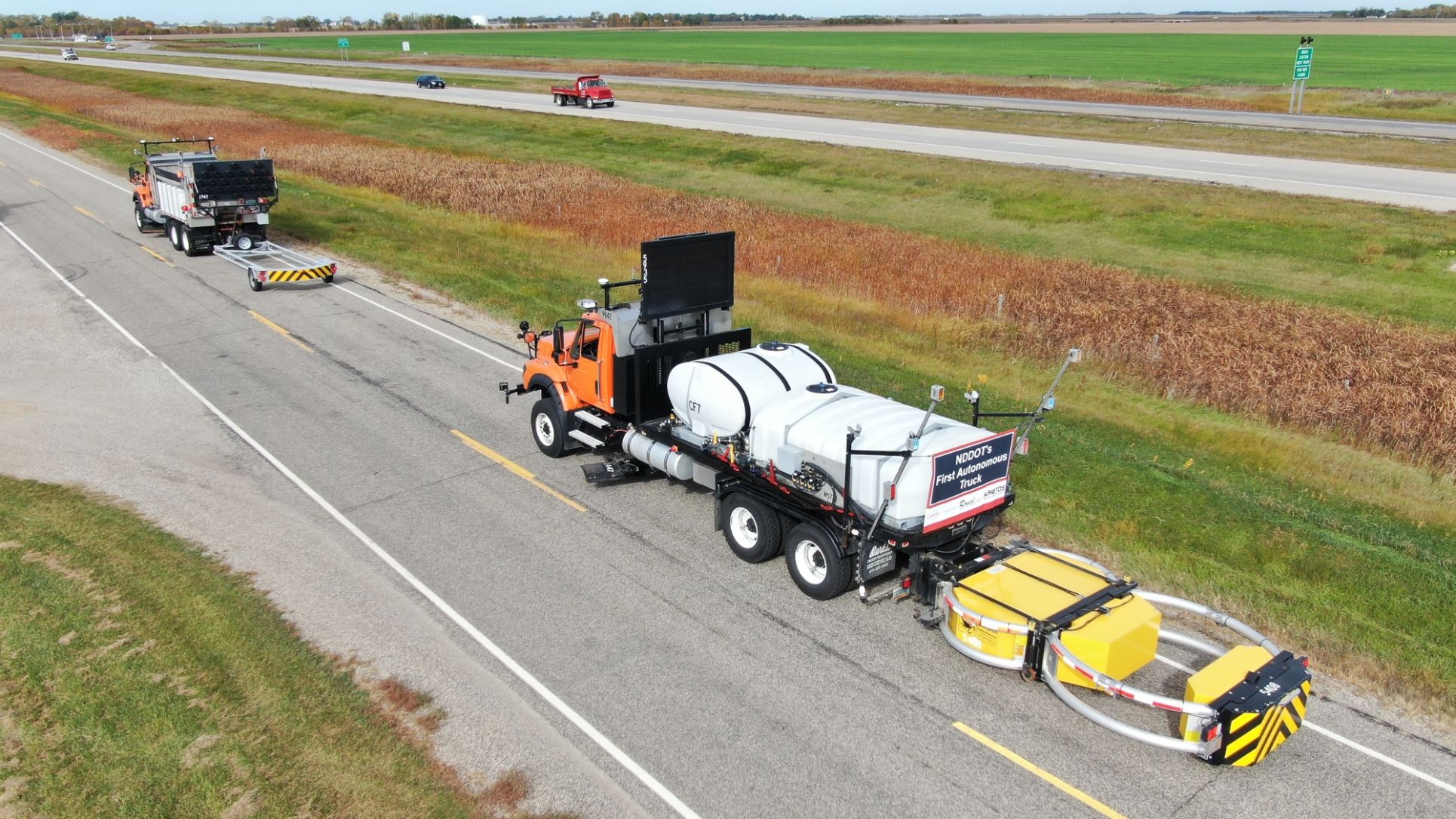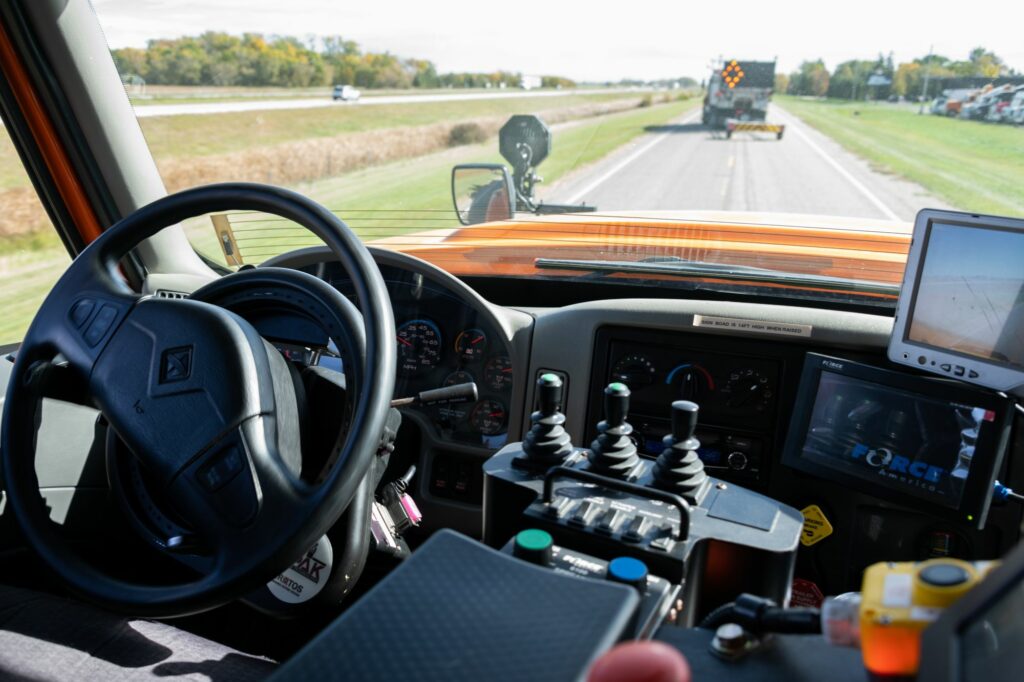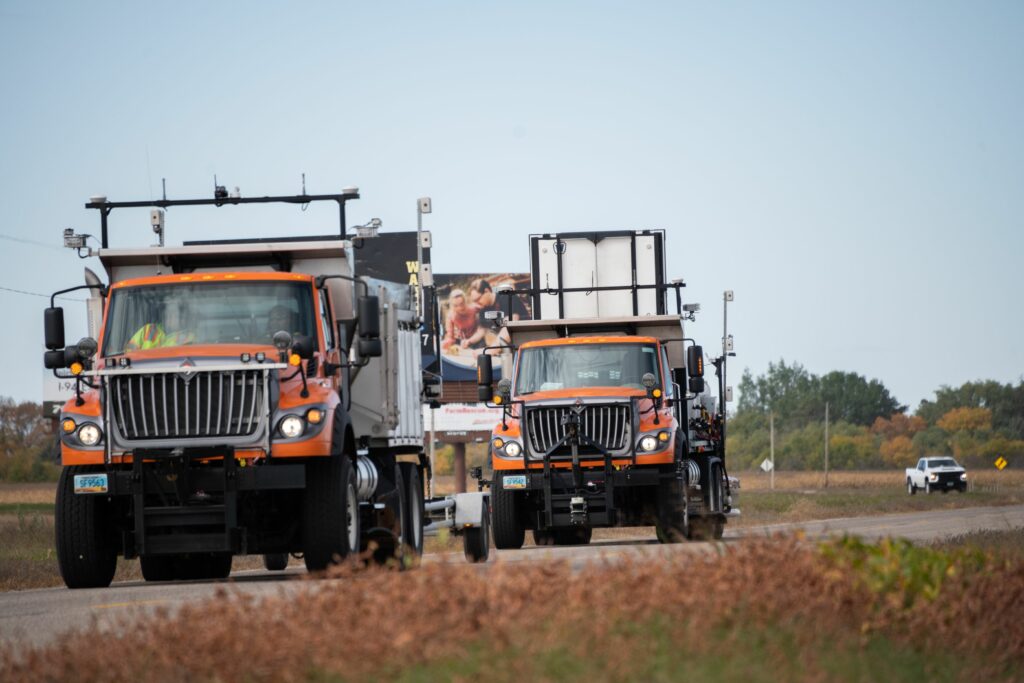North Dakota to Deploy Autonomous Attenuator Trucks
BY AsphaltPro Staff

In 2019 there were 234 work zone related crashes on North Dakota highways, resulting in 64 injuries and two fatalities, according to the North Dakota Department of Transportation (NDDOT). That’s why NDDOT launched its autonomous impact protection vehicle program, which aims to protect construction crews from drivers on the road who may not be paying attention to the construction site or have lost control of their vehicle.
“Impact protection vehicles are typically human operated and are designed to protect road construction crews from distracted motorists in work zones,” said NDDOT Maintenance Coordinator Troy Gilbertson. “The problem is having humans in vehicles that are designed to be impacted by distracted drivers puts our operators in dangerous positions.”

The technology behind the autonomous crash attenuator was developed by Kratos Defense in partnership with Royal Truck & Equipment
Although it’s been several years since the last incident, there have been instances of motorists hitting crash attenuator trucks and snow plows in the past. “We’ve had employees talk about finding a safer job when they have had experiences like this,” Gilbertson said.
NDDOT first began its autonomous vehicle program in January 2020, when the Federal Highway Administration (FHWA) awarded NDDOT a $241,687 grant through its Accelerated Innovation Deployment (AID) program. Travis Lutman, with NDDOT’s maintenance office, applied for the grant to purchase the autonomous truck.
The autonomous attenuator truck wirelessly connects to a lead vehicle, which it will then follow while being monitored and controlled by an operator in the lead vehicle. “The system is designed to allow the autonomous truck to follow the lead vehicle at a distance which can be set by the lead vehicle,” Gilbertson said.
The spacing between the two units can vary depending on the needs of the job. “We set the distance between the vehicles so someone cannot sneak between, and have signage on the trucks identifying it as autonomous and warning motorists to stay clear,” Gilbertson said. The truck is programmed to safely come to a stop if anything comes between it and the lead vehicle.
The technology was developed by Kratos Defense in partnership with Royal Truck & Equipment, previously covered by AsphaltPro in 2015 (visit the article “This Truck Drives Itself” on theasphaltpro.com). The equipment was installed on one of NDDOT’s existing trucks in the fall of 2020
“During our 2021 construction season, we have been using the autonomous attenuator truck in work zones to provide increased safety to our workers in maintenance operations on roadways,” Gilbertson said. “To date, the equipment has worked very well for the NDDOT.”
Earlier this year, the project was recognized by the American Society of Civil Engineers (ASCE) as one of 13 Infrastructure Gamechangers, each of which are infrastructure projects and programs representing the latest innovations in transportation, water and energy infrastructure.

Gilbertson said they’ve had the autonomous vehicle follow as close as 100 feet behind the lead vehicle, though the exact distance varies from job to job.
Forty states are now represented by a Gamechanger, which must meet at least one of the following criteria: innovative technologies, creative funding mechanisms, trend-setting standards, and unique collaborations between agencies or private firms.
“With resources stretched thin, finding solutions that can make the most of the tools afforded us can be a challenge, but is an essential component of improving the built environment,” said ASCE President Jean-Louis Briaud. “This year’s Gamechangers are a testament to the forward-thinking nature of the engineering community.”
Safety and advancing existing technology were the catalyst to begin the NDDOT’s project, Gilbertson said. “As the program is very new, we are constantly evaluating the benefits it brings to the NDDOT along with how well the equipment functions on our highways,” he added.
“This concept takes the operator out of the crash vehicle, increases safety and very possibly saves lives,” Gilbertson said. “The concept is new, but the benefits are huge and fairly obvious to contractors and road crews alike.”
